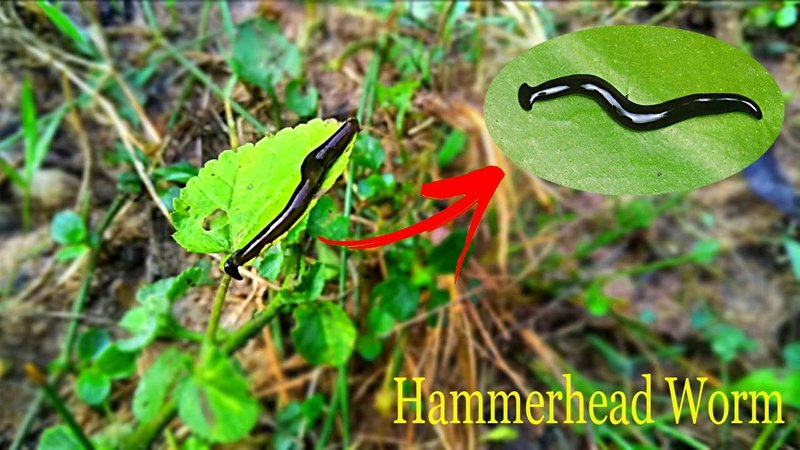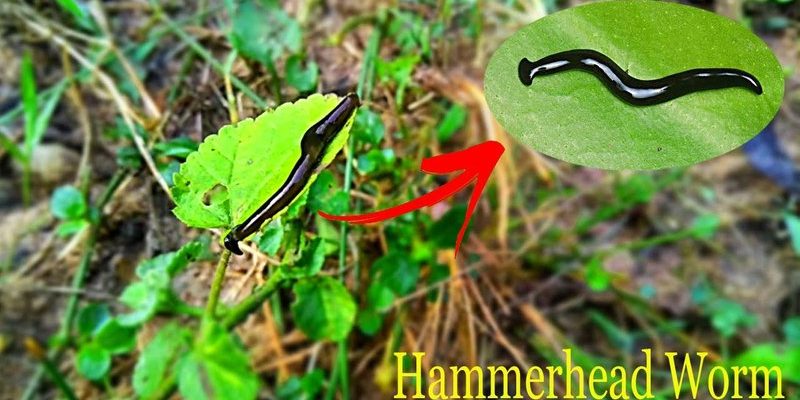
Identifying a Malayan hammerhead worm isn’t just about impressing your friends; it’s also about understanding our ecosystem better. Known scientifically as *Bipalium kewense*, these worms play an essential role in controlling the populations of other soil-dwelling organisms. So, whether you’re a nature lover, an aspiring biologist, or just curious about the creatures you come across, knowing how to identify them can enrich your outdoor experiences.
What are Malayan Hammerhead Worms?
So, what exactly is a Malayan hammerhead worm? These worms have a distinctive shape that resembles a hammer, with a broad, flat head and a long, thin body. They can grow quite large, sometimes reaching over a foot in length! With colors that often range from dark brown to a vibrant yellow, they’re easy to spot if you know where to look.
These worms are carnivorous and primarily feed on earthworms, which means they play a significant role in the ecosystem. Although they might look a bit intimidating, they’re not harmful to humans. Think of them as nature’s little pest controllers, helping maintain balance in the soil.
Where to Find Malayan Hammerhead Worms in Their Natural Habitat
So where can you find these fascinating creatures? Malayan hammerhead worms thrive in warm, humid environments, which makes Southeast Asia their primary home. However, they’ve been spotted in various tropical and subtropical regions around the world. You might encounter them in:
- Moist, shaded areas like gardens or rainforests
- Near decaying organic matter, such as leaf litter
- Along the banks of rivers and streams
When searching for them, early mornings after a rain shower are often the best times. The damp conditions encourage these worms to venture out, making them easier to spot. Picture yourself strolling through a lush garden after a rain, and keep an eye out for those distinctive hammer-shaped heads peeking from the soil.
Identifying the Physical Characteristics
Now that you know where to look, let’s discuss how to identify a Malayan hammerhead worm. The first thing you’ll notice is its unique shape. The head is flat and wide, resembling a hammer or spade, while the body is elongated and can be quite slim. Here are some key features to look for:
- Color: They generally come in shades of brown, yellow, or reddish-brown.
- Length: They can grow up to 1.5 feet long, so if you see a long, slender creature, take a closer look.
- Body Texture: The body has a smooth, rubbery appearance, and you’ll notice that it’s divided into segments.
While you’re examining them, keep your distance because they have a defensive mechanism. If threatened, they might release a mucus that has a mild toxin—just enough to deter predators.
Behavioral Traits of Malayan Hammerhead Worms
Understanding a creature’s behavior can be just as important as recognizing its physical traits. Malayan hammerhead worms are primarily nocturnal, meaning they are more active at night. During the day, they tend to bury themselves in the soil to avoid the heat and sunlight.
They’re also known for their hunting methods. Malayan hammerhead worms can sense vibrations in the ground, which helps them locate their prey, mainly earthworms. When they find their dinner, they wrap around it, secreting digestive enzymes that break down the worm’s tissues. This process might sound a bit gruesome, but it’s nature’s way of maintaining balance.
When you see one gliding across the ground, it moves in a slow, wave-like motion, making it look quite graceful despite its peculiar appearance. Watching them can be mesmerizing, much like observing a slow-motion film of a dance performance.
Common Misidentifications
While it’s fun to explore, it’s easy to confuse the Malayan hammerhead worm with other creatures. Two common figures that might catch your eye are the flatworm and the tapeworm. Here’s how to tell them apart:
- Flatworms: They are generally smaller and lack the distinctive hammer shape.
- Tapeworms: These are usually found in the intestines of animals and won’t be roaming in your garden!
If you find something that looks similar, observe its movement and habitat. The Malayan hammerhead worm prefers moist soil and is often seen on the surface, while its look-alikes might not share the same environment or behavior.
Environmental Impact and Conservation
As you learn more about these worms, you might be wondering about their impact on the environment. Malayan hammerhead worms are vital to soil health. They help control earthworm populations, which can be beneficial in preventing overpopulation.
However, their presence can sometimes indicate a change in the ecosystem. In areas where they’ve been introduced, they can disrupt local species, leading to imbalances. Understanding their role and potential impact is important for conservationists and nature lovers alike.
By being aware of how to identify them, we can appreciate their role in the ecosystem while also being mindful of the delicate balance of nature.
Next time you’re out exploring nature, keep an eye out for the Malayan hammerhead worm. Their unique shape and behavior might just make you appreciate the small wonders of the natural world. Understanding how to identify these creatures connects us to the ecosystem, reminding us of the importance of each organism—no matter how strange they may seem.
So, grab your walking shoes, take a stroll in a nearby garden, and let the hunt for these fascinating worms begin. Who knows? You might just walk away with a new appreciation for the quirks of nature!

